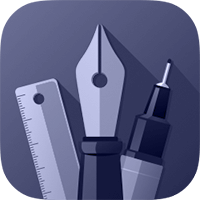Create a Photo Stack Icon
In the following tutorial you will learn how to create a simple photos icon in Graphic for Mac.
For starters you will learn how to setup a simple grid and how to enable the Snap to Grid feature. Next, you'll learn how to create a simple shape, how to fill it with a linear gradient and how to add an image inside your document. Taking full advantage of the Effects pane, you will learn how to add subtle shading and highlights.
Finally, you'll learn how to rotate objects and how to easily adjust image fills.
Step 1
Go to File > New (Command + N) to bring up the New Document window. Select the Grid document style, set the document units to pixels, and set the document dimensions to 600 pixels wide by 600 pixels high.
Next, we'll set up the document grid. Switch to the Grid pane in the Properties panel. If the Properties panel is not currently visible, you can easily open it using the ruler icon that lies above the Layers panel. Change the grid X Spacing and Y Spacing to 5, set the Subdivisions to 0, and enable Snap to Grid (Command + Shift + ').
Keep in mind that you can quickly enable or disable the grid and the Snap to Grid feature using the Command + ' and Command + Shift + ' keyboard shortcuts.

Step 2
Focus on your Toolbar and notice that by default the fill color is set to white while the stroke color is set to black. Click that stroke color well and drag the Alpha slider to 0%. This will make the stroke invisible. Pick the Rounded Rectangle Tool (Shift + M), focus on your Tool Options bar and drag the Corner Radius slider to 3 pt. Move to your canvas and create a 220 x 265 px shape - the grid and the Snap to Grid feature will ease your work.
Make sure that your shape stays selected and focus on the Effects pane from the Appearance panel. If the Appearance panel is not currently visible, you can easily open it using the leftmost icon that lies above the Layers panel.
Focus on the existing Fill and select Linear Gradient from the Type drop-down menu. Set the angle to 90 degrees and then move to the gradient sliders. Select the left one and set its color to R=200 G=201 B=202 and then select the right one and se its color to R=240 G=241 B=242. Simply click on the gradient bar and you will get a new gradient slider. Select it, set the color to R=220 G=221 B=222 and drag it to the left until the Location tooltip shows 15%.
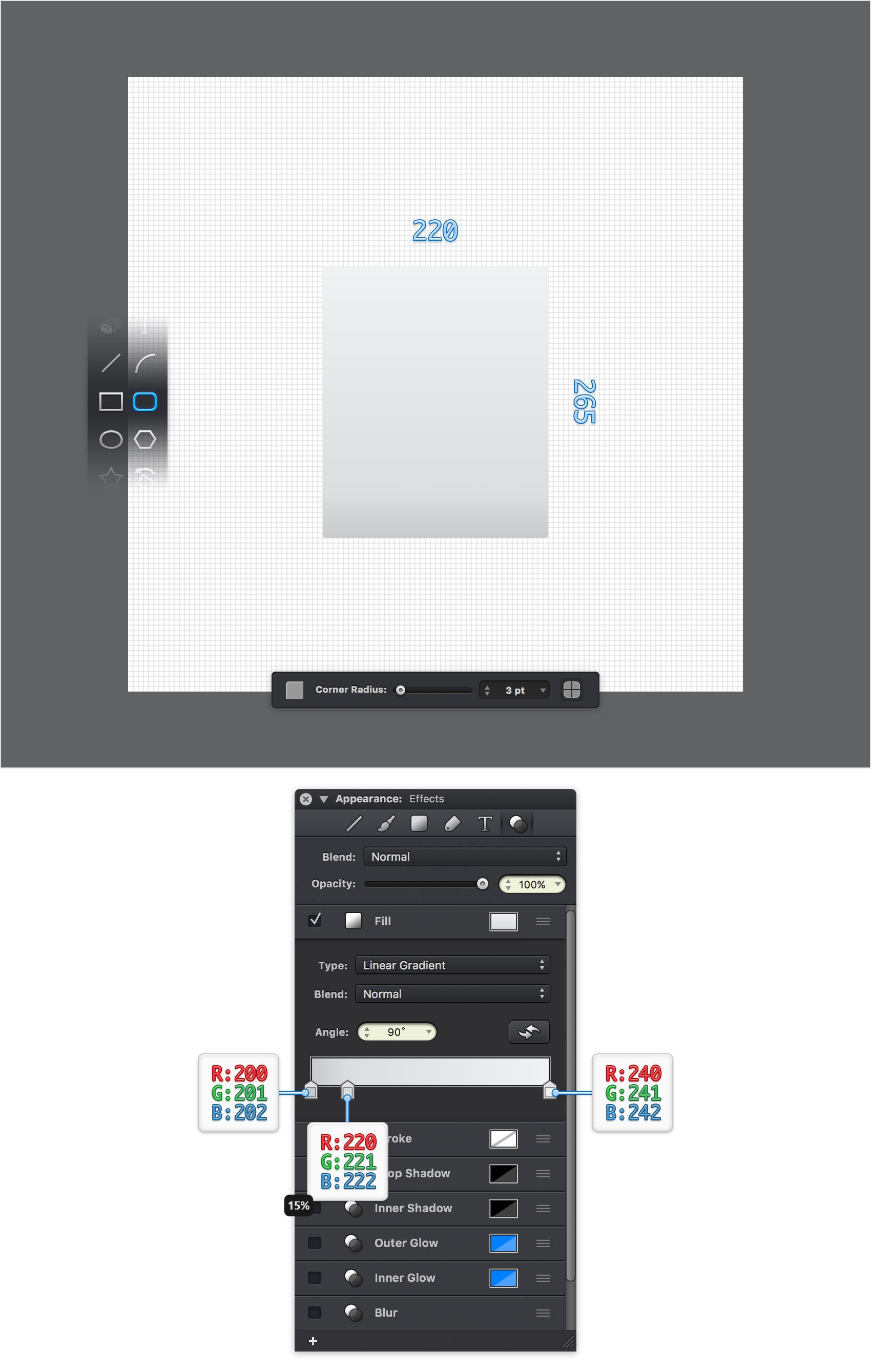
Step 3
Download this image and drag it inside your Graphic document. Make sure that it stays selected and focus on the Geometry pane from the Properties panel.
Check the Constrain width and height button (highlighted in the following image) and then enter 200 px in the Height box. This will resize your image without messing the proportions. Place your image exactly as shown in the first image.
Get back to your Toolbar, select the fill and replace the existing color with a simple white (R=255 G=255 B=255). Pick the Rectangle Tool (M), create a 200 px square and place it exactly as shown in the second image.
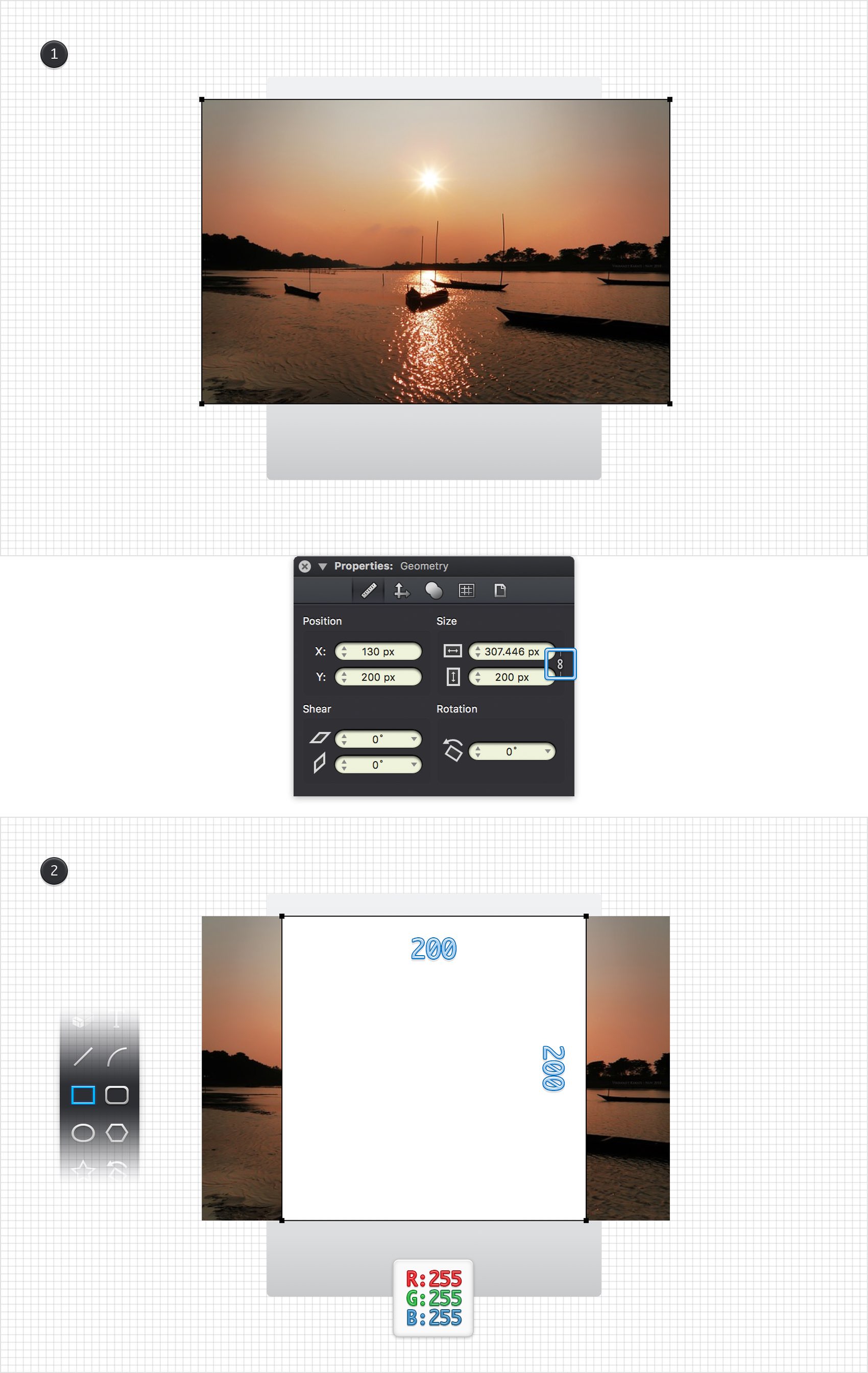
Step 4
Reselect your white square along with the image that lies behind, focus on the Path Tools pane from the Properties panel and click the Intersect button. In the end things should look like in the second image.
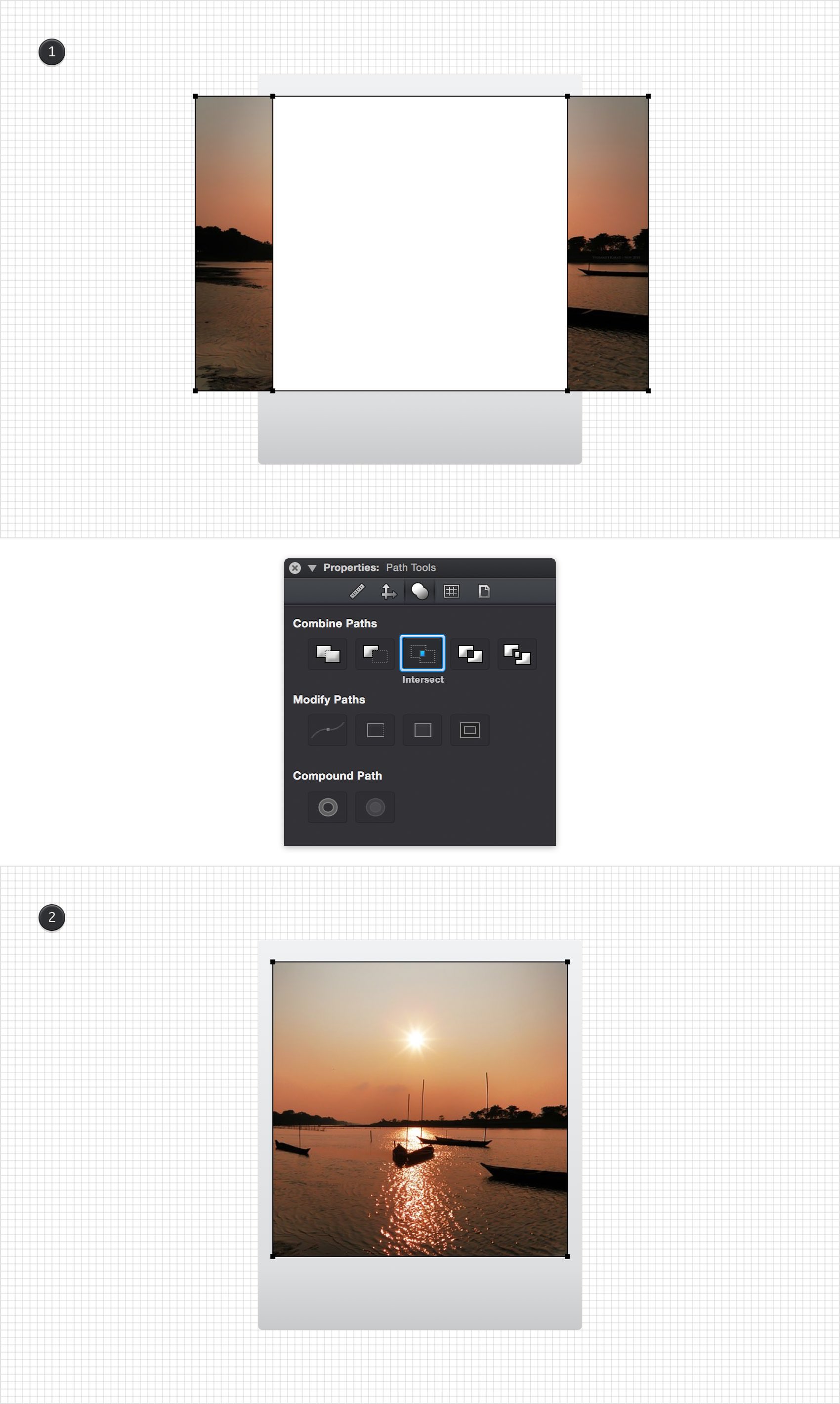
Step 5
Make sure that your image stays selected, focus on the Effects pane from the Appearance panel and check the little box that stands for the existing Stroke to activate it.
Select this Stroke, drag the Width slider to 1 pt adn then set the Position to Inside and the Blend to Soft Light. Keep focusing on this stroke and click on its color well. Drag the Alpha slider to 10% and set the color to black (R=0 G=0 B=0).
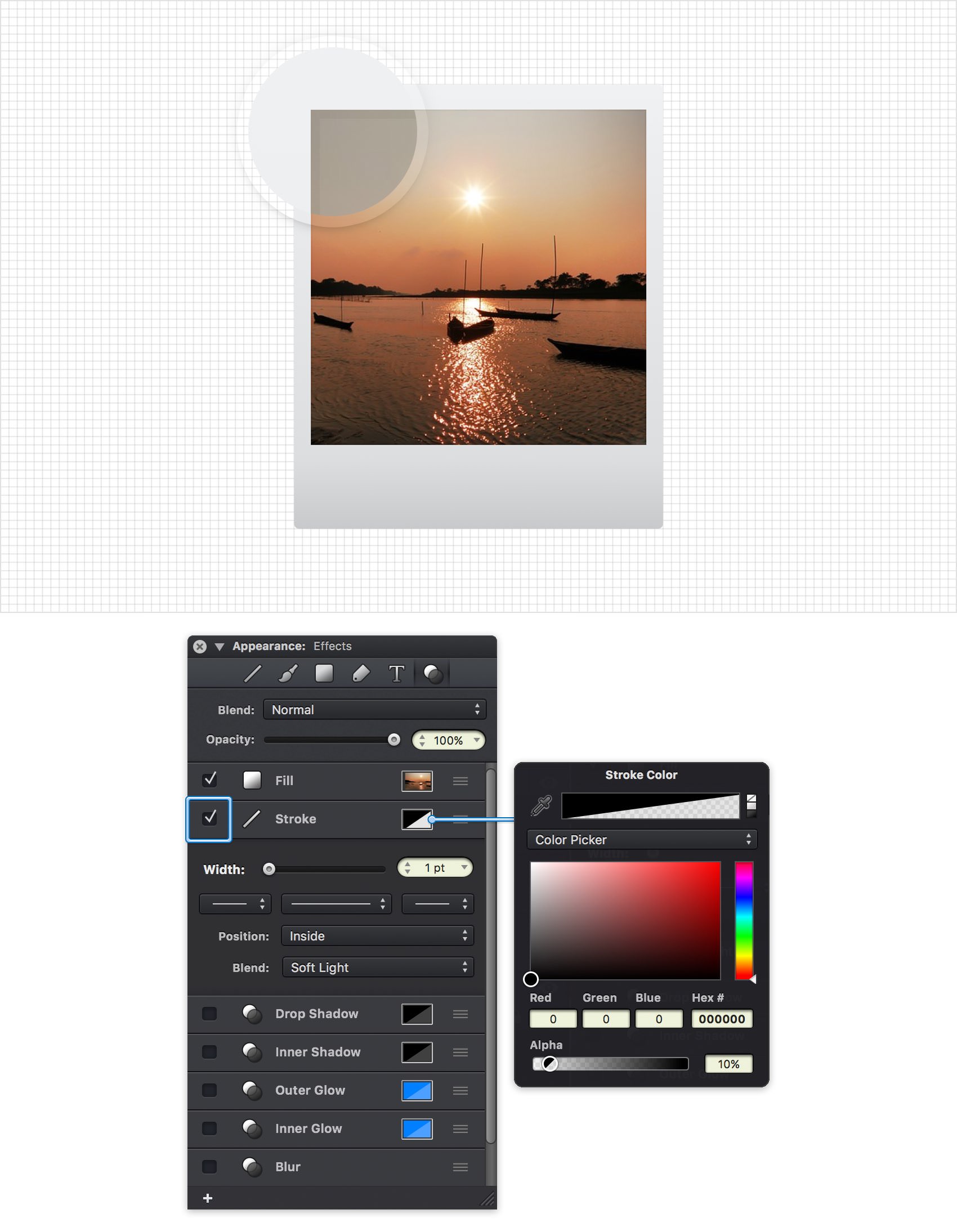
Step 6
Make sure that your image stays selected, keep focusing on the Effects pane from the Appearance panel and add a second Stroke using the plus button located in the bottom, left corner of your panel. Select this new Stroke and enter the attributes shown in the following image.
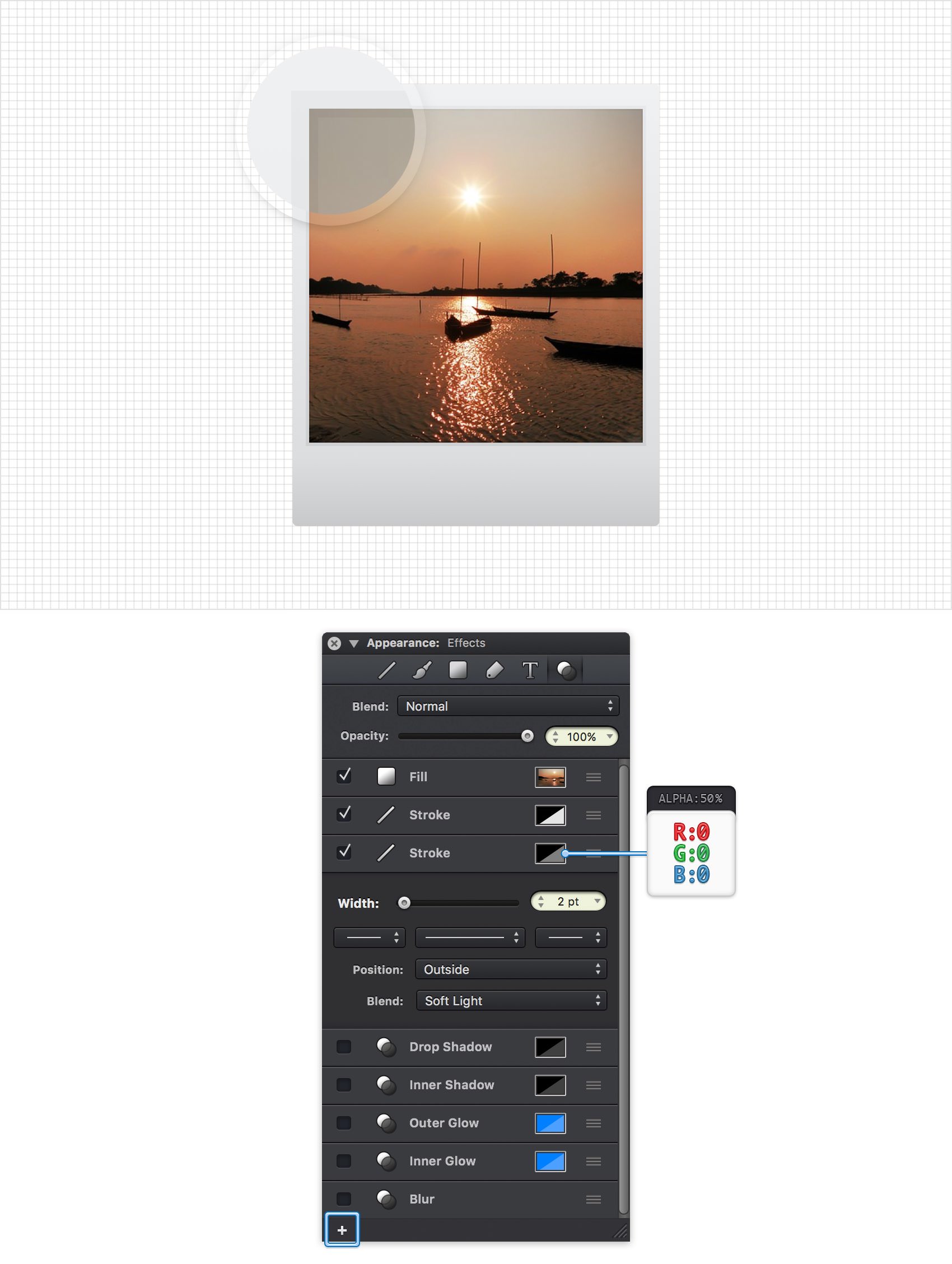
Step 7
Make sure that your image stays selected, keep focusing on the Effects pane from the Appearance panel and add a third Stroke using that same plus button. Select this new Stroke, make sure that it lies below the existing ones and enter the attributes shown in the following image.

Step 8
Make sure that your image is still selected, keep focusing on the Effects pane and activate the existing Inner Glow effect. Drag the Size slider to 15 pt, select Soft Light from the Blend Mode drop-down menu and then click the color well that stands for this effect. Drag the Alpha slider to 30% and set the color to black. Once you're done, drag this Inner Glow effect right below the top stroke.

Step 9
Now, let's focus on the rounded rectangle. Make sure that it stays selected and go to the Effects pane. Activate the existing Stroke and enter the attributes shown in the following image.

Step 10
Make sure that your rounded rectangle is still selected and keep focusing on the Effects pane. Using that same plus button, add a second stroke, select it and enter the attributes shown in the following image.
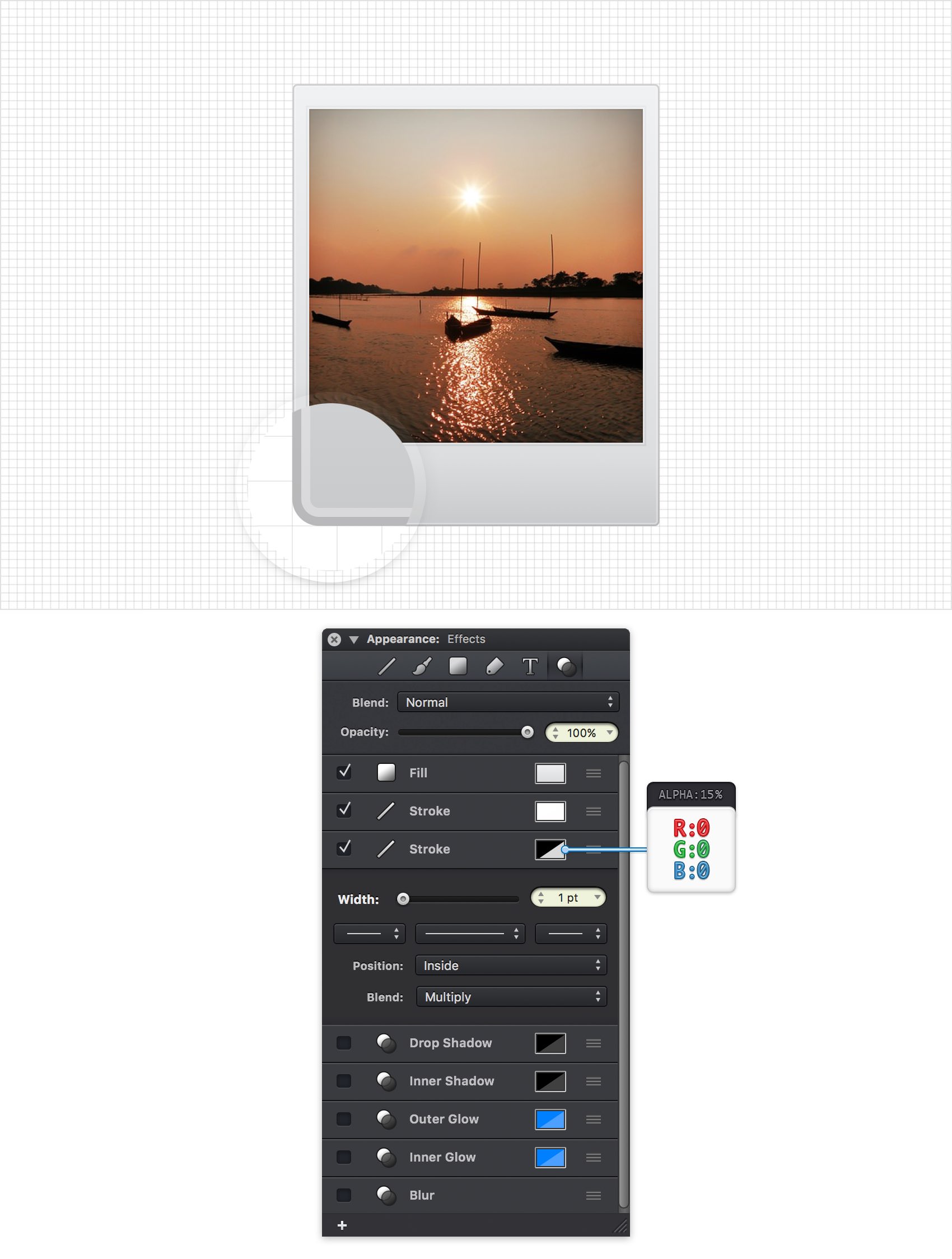
Step 11
Make sure that your rounded rectangle is still selected and keep focusing on the Effects pane. Activate the existing Drop Shadow effect, enter -1 in the Y box and 0 in the other two boxes and thne click the color well that stands for this effect. Drag the Alpha slider to 3% and set the color to black.

Step 12
Make sure that your rounded rectangle stays selected and keep focusing on the Effects pane. Add a second Drop Shadow, select it and enter the attributes shown in the following image.
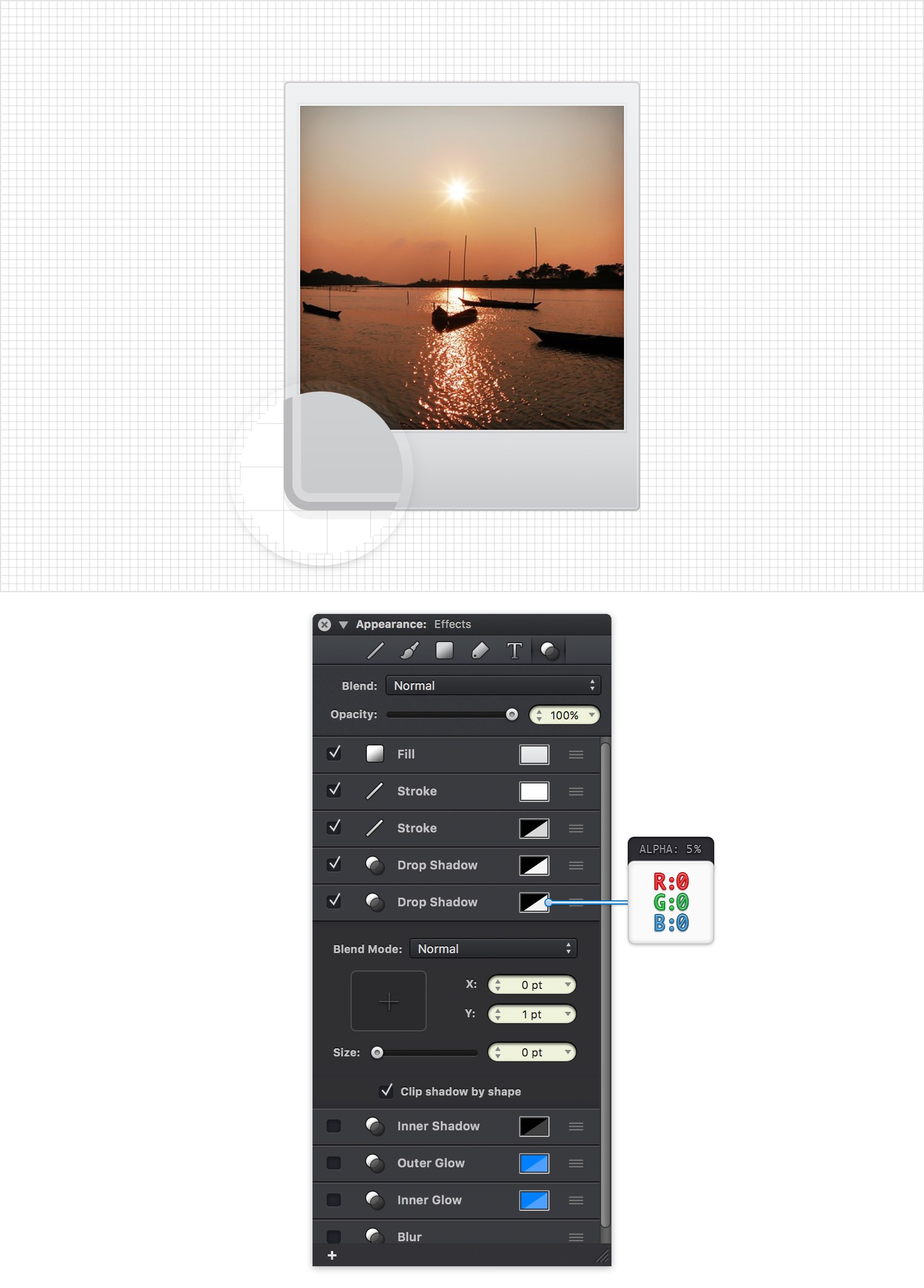
Step 13
Make sure that your rounded rectangle is still selected and keep focusing on the Effects pane. Add a third Drop Shadow, make sure that it lies below the existing effects and enter the attributes shown in the following image.
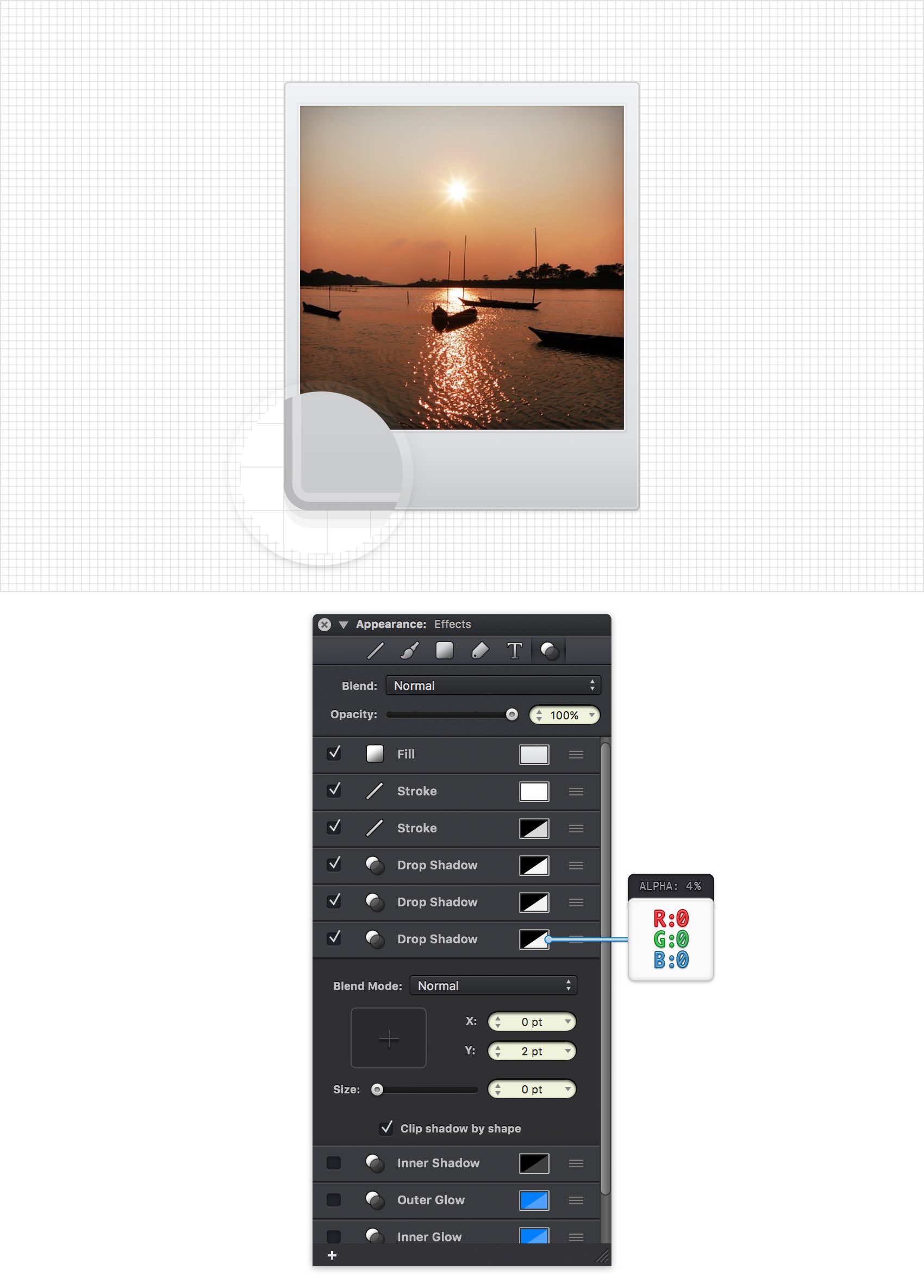
Step 14
Make sure that your rounded rectangle is still selected and keep focusing on the Effects pane. Add a fourth Drop Shadow, make sure that it lies below the existing effects and enter the attributes shown in the following image.

Step 15
Make sure that your rounded rectangle is still selected and keep focusing on the Effects pane. Add a fifth Drop Shadow, drag it below the existing effects and enter the attributes shown in the following image.
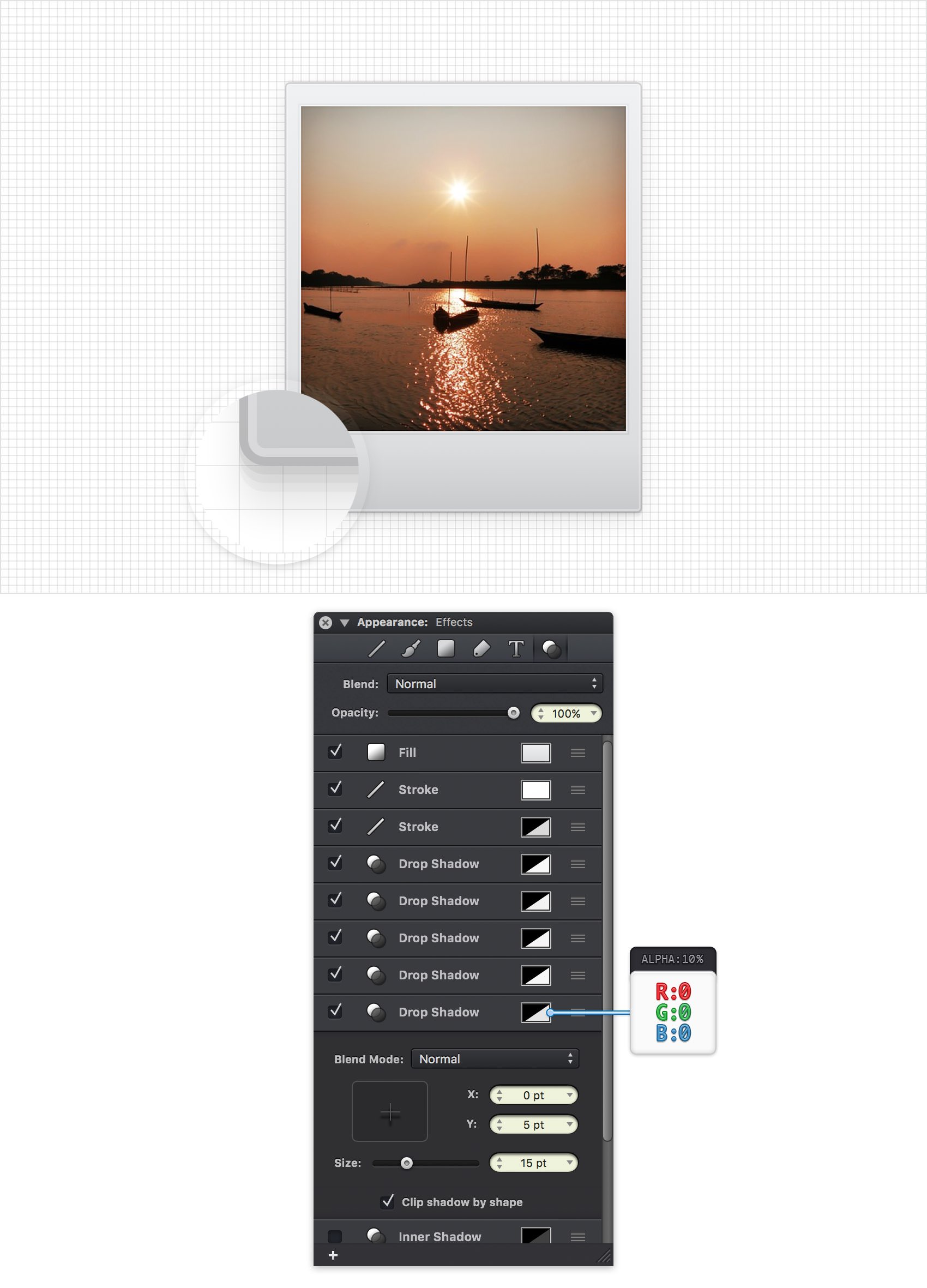
Step 16
Make sure that your rounded rectangle is still selected and keep focusing on the Effects pane. Activate the existing Inner Shadow, drag it right below the fill and then enter the attributes shown in the following image.
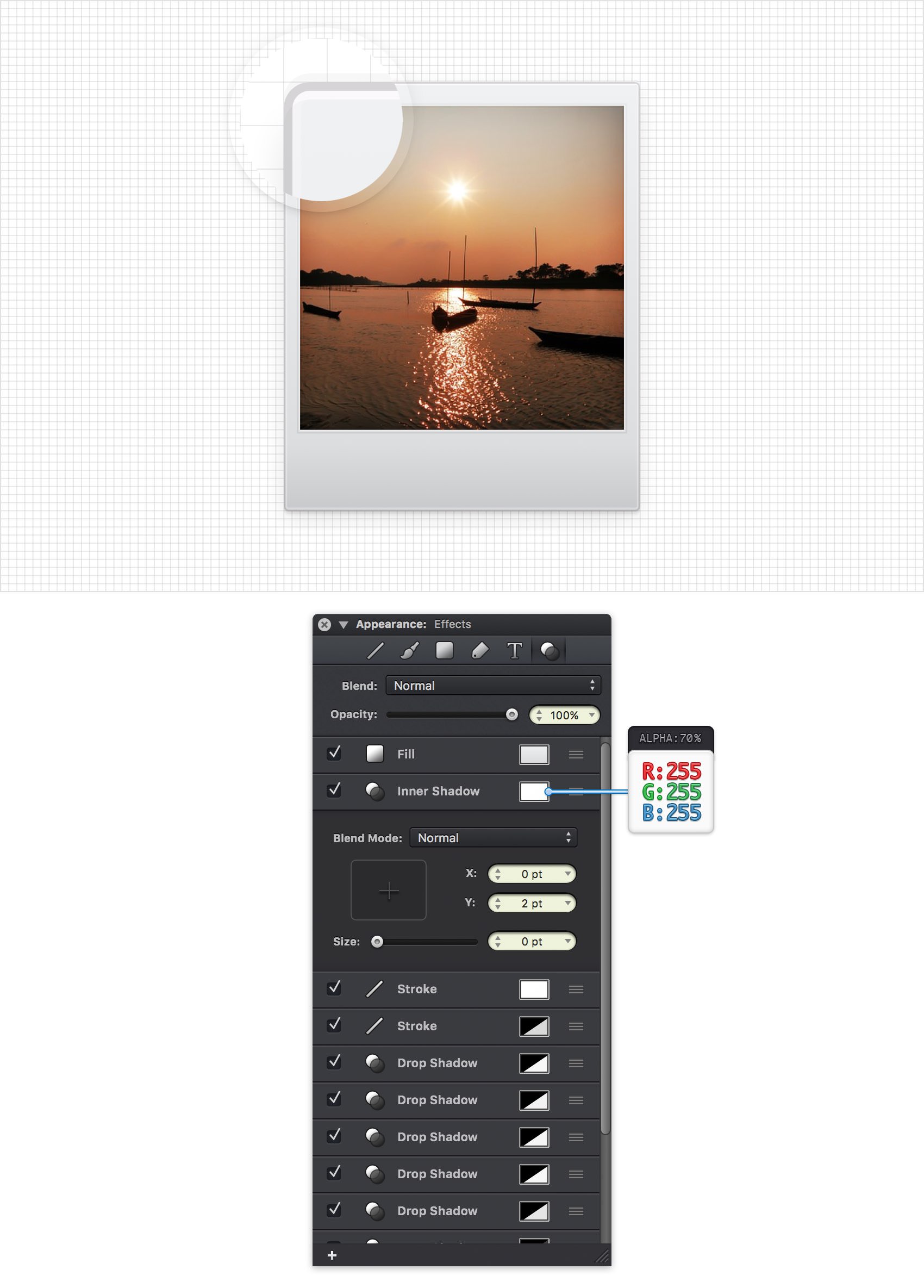
Step 17
Make sure that your rounded rectangle is still selected and keep focusing on the Effects pane. Activate the existing Inner Glow effect, drag it right below the fill and then enter the attributes shown in the following image.
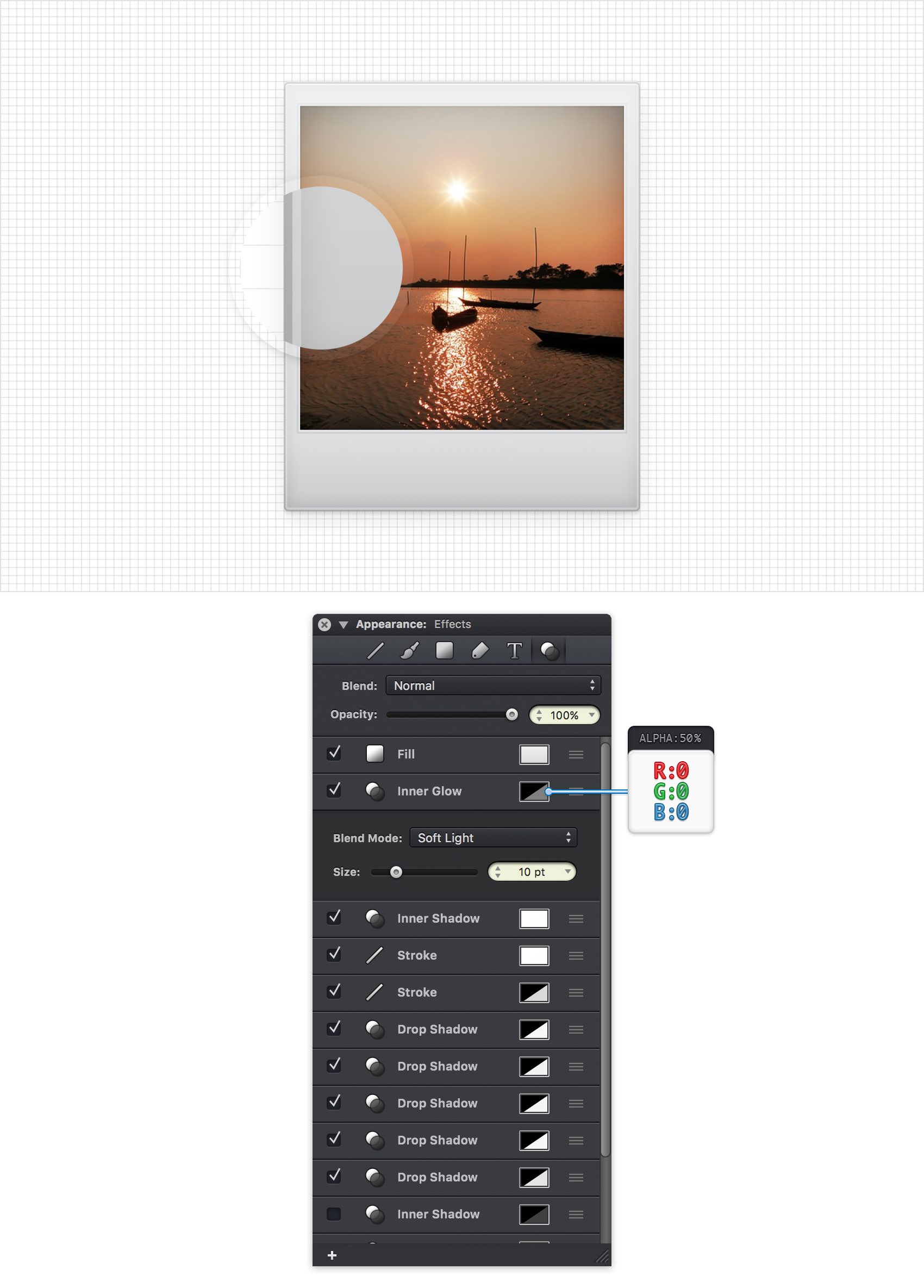
Step 18
Select both the image and the rounded rectangle and switch to the Rotate Tool (R). Focus on the Tool Options bar, set the Angle to -5 degrees and then click that Copy button. In the end things should look like in the second image.
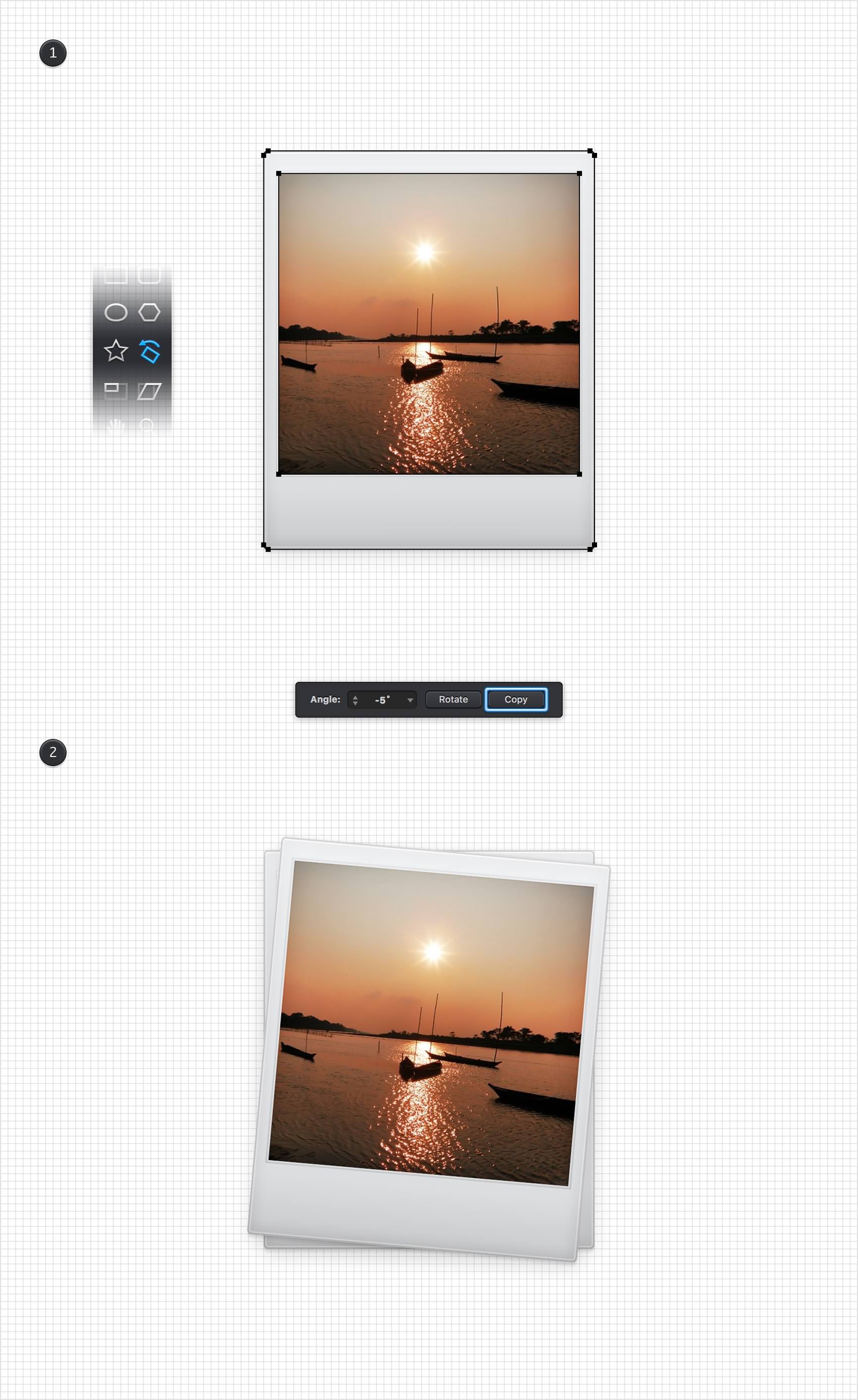
Step 19
Select the two copies made in the previous step and pick again the Rotate Tool (R). Return to the Tool Options bar, this time set the Angle to -15 degrees and then click that Copy button. In the end things should look like in the second image.

Step 20
For this step you need to download this second image.
Get back to your canvas, select the front image and focus on the Effects pane. Select the existing fill and then click that Change Image... command. Simply add the image downloaded a few moments ago and things will look like in the second image.
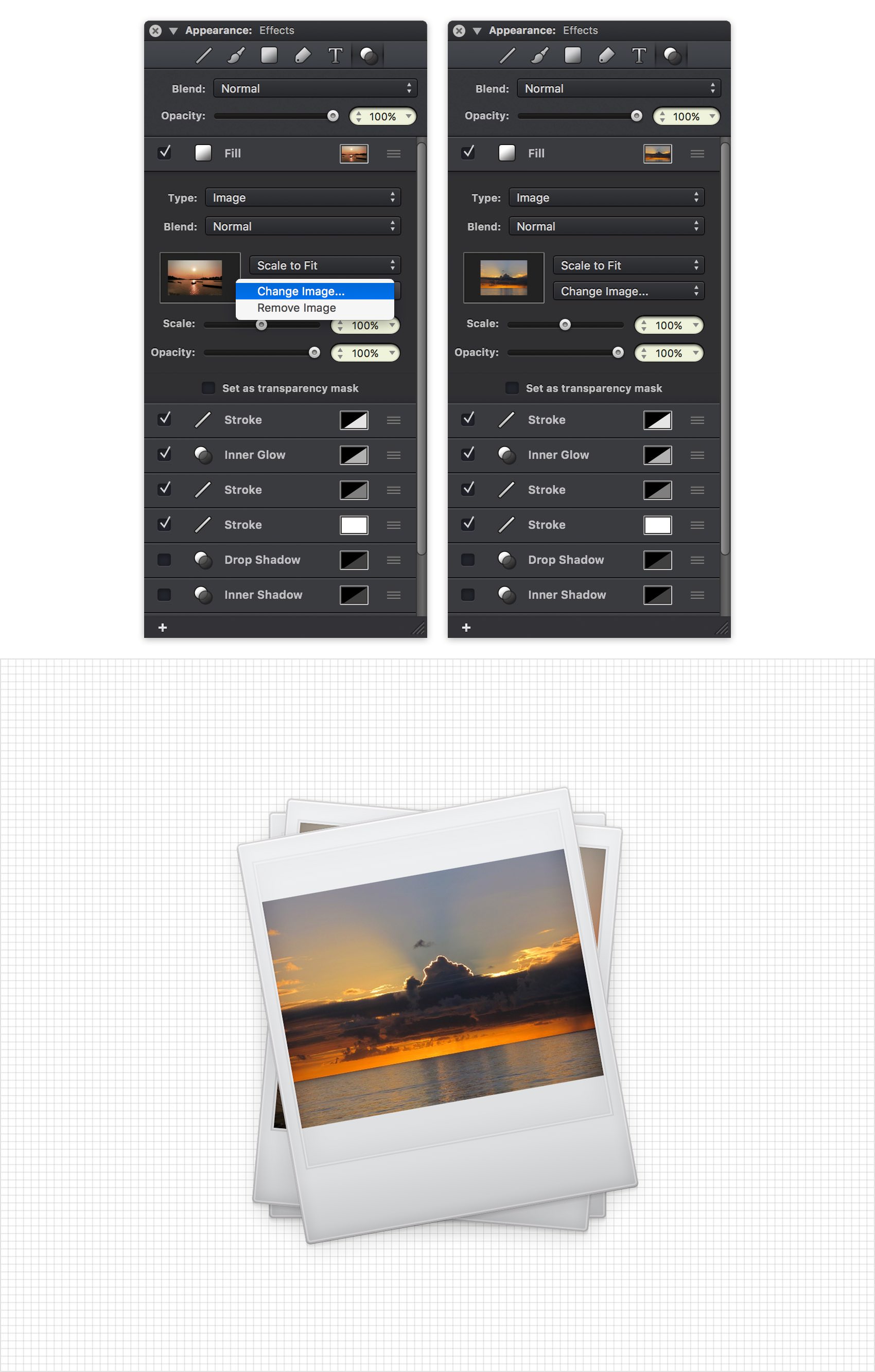
Step 21
Now, you might have noticed that the image added in the previous step does not cover the entire rectangle where it lies. It's a big issue that can be solved pretty fast.
Make sure that your front image is selected and focus on the Effects pane. Select the existing fill, drag the Scale slider around 135% and things will look about as shown in the following image.
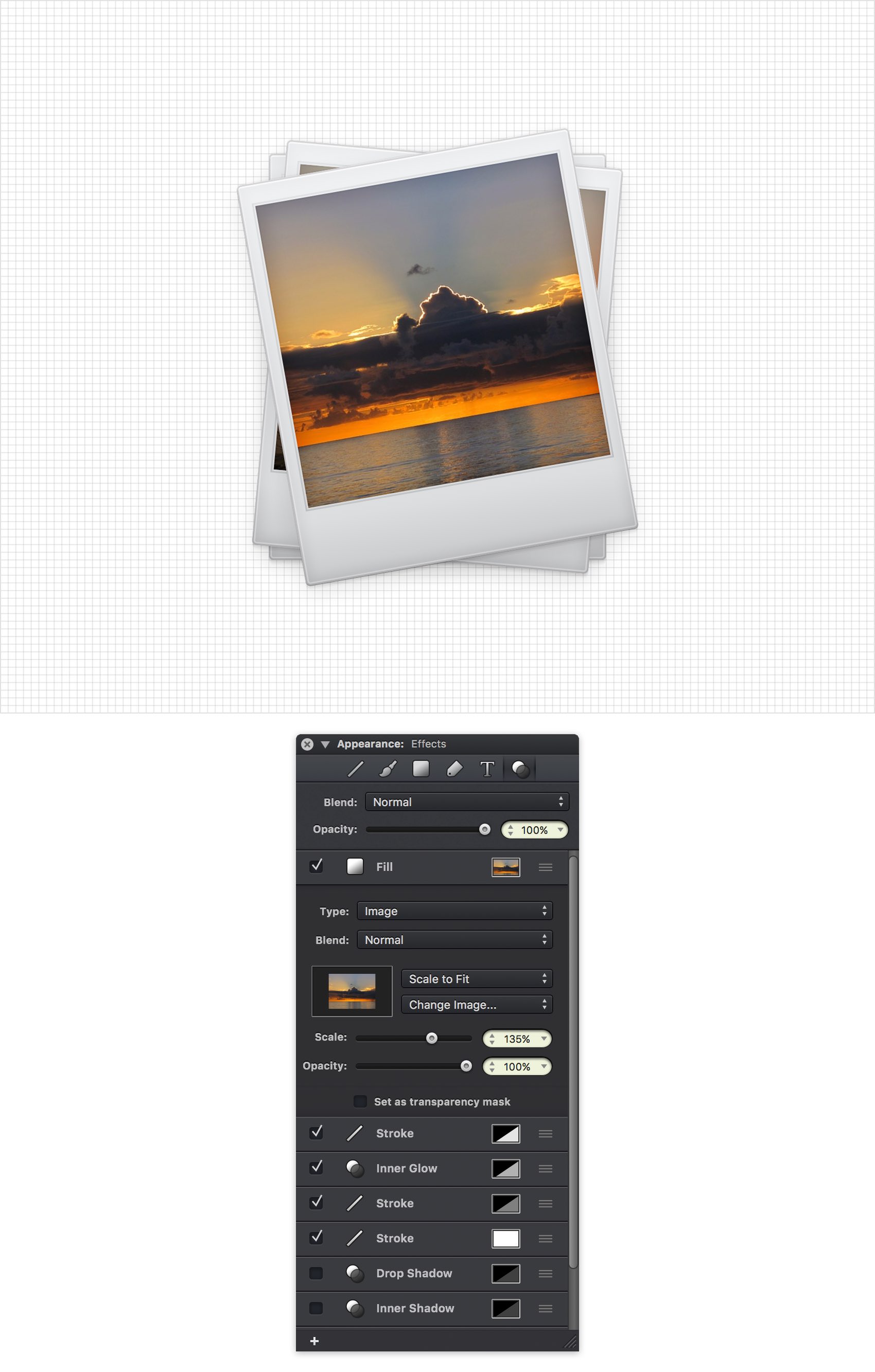
Finished Design
Congratulations, you've finished the tutorial!
Hope you've enjoyed learning some of the techniques and processes presented in these steps. As always, feel free to adjust the final design and make it your own.
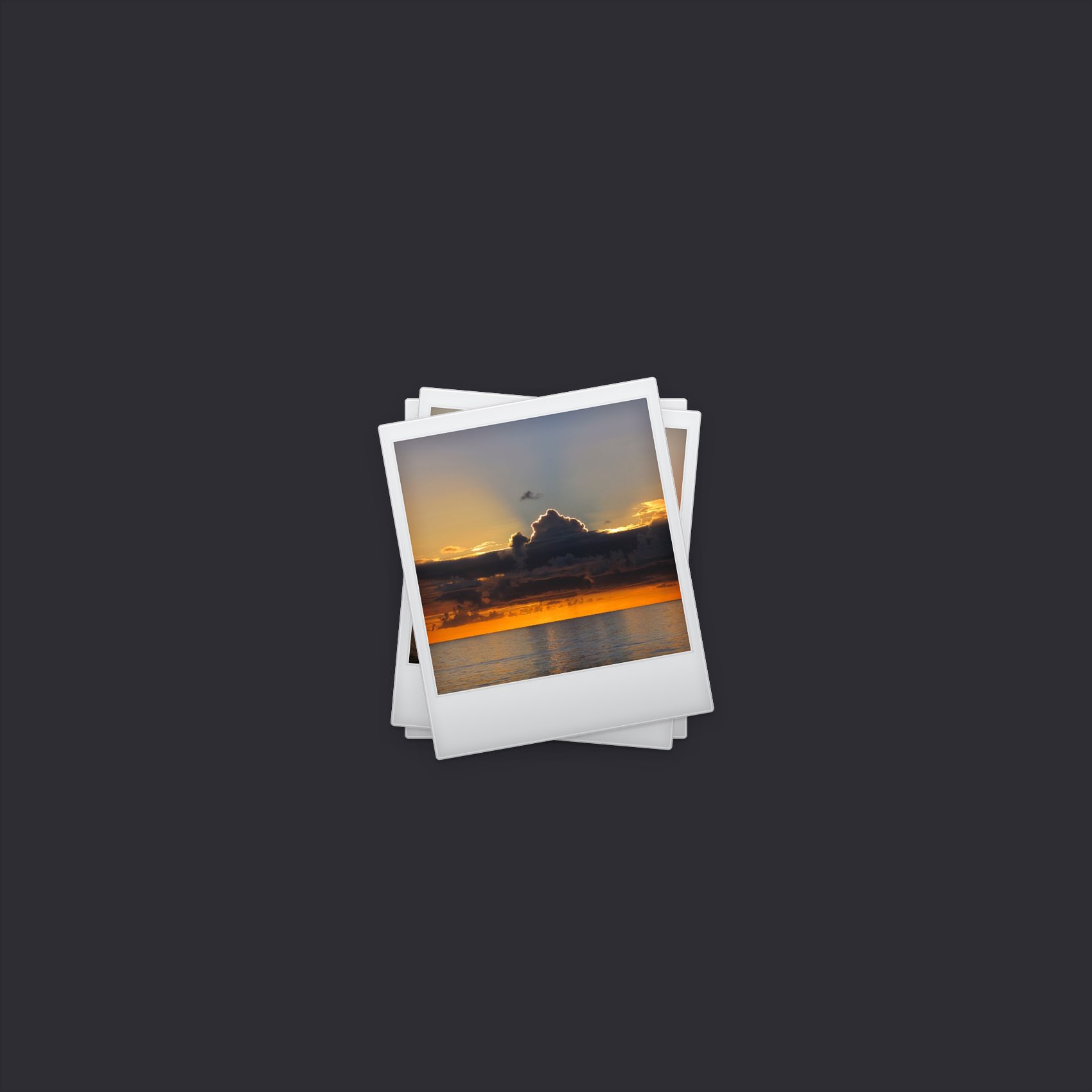
Download Graphic File:
photosicon.idraw 


